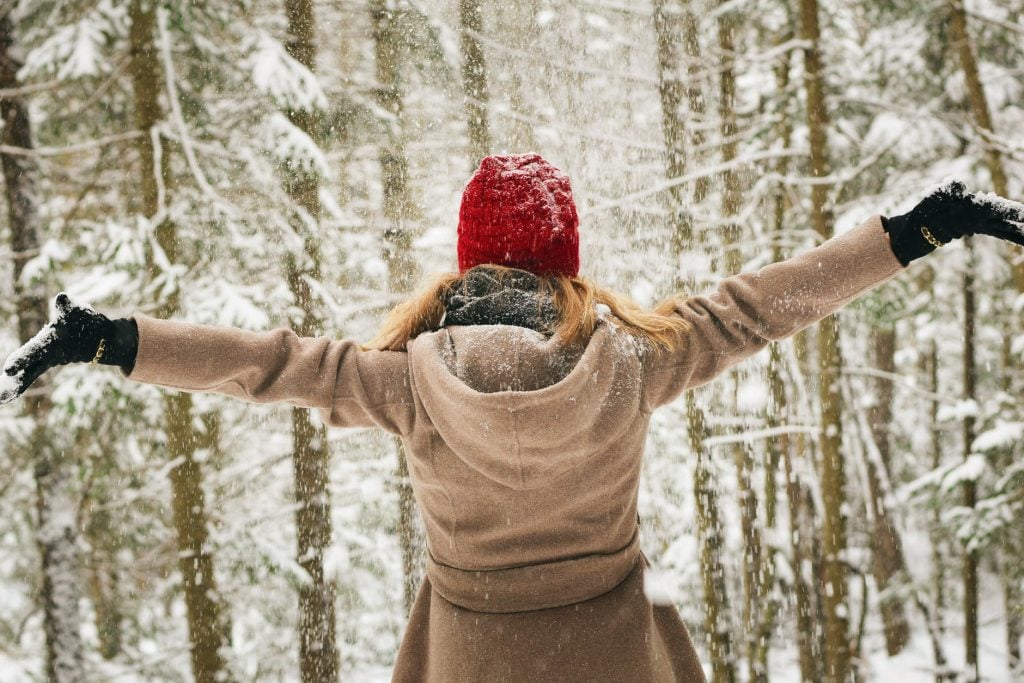Is winter your favorite season? At Great Wolf Lodge we love winter and we’re happy it’s here! Whether you enjoy making a snowman outside your house or like sledding down a hill, winter is here and we’re celebrating with some winter fun facts! Here are some “did you know” winter facts:
Fun Facts about Winter
- Winter is one of 4 seasons that include Winter, Spring, Summer and Fall.
- Winter starts on December 21st and last through March 20th. That’s 90 days of winter!
- In the Northern Hemisphere, the shortest day of the year is in winter during the winter solstice which happened on December 21, 2021. It had the shortest number of daylight hours.
- If you live below the equator, winter solstice happens in June. This happens in countries including Australia, Brazil and South Africa where winter begins June 1st.
- Every snowflake has 6 sides. This is due to ice having a natural 6-sided crystal structure.
- According to the Guinness World Records, on January 28, 1887, a snowflake 15 inches wide and 8 inches thick fell in Fort Keogh, Montana, making it the largest snowflake ever observed.
- The sun looks bigger in the winter because it is much lower in the sky.
- Bears, bats, squirrels and hedgehogs are some of the many animals that hibernate in the winter. To prepare for hibernation, animals collect enough food to last them through the winter.
- The coldest temperature recorded in the U.S. is 70 degrees below zero, measured at Rogers Pass, Montana, on Jan. 20, 1954.
- Snow forms when the atmospheric temperature is at or below freezing (32 degrees Fahrenheit) and there is some moisture in the air.
- The season’s hottest temperatures are in Miami, Florida where nearly every winter day reaches at least 60 degrees.
- The largest recorded snowman ever built was in Bethel, Maine, in February 1999. The 113-foot, 7-inch snowman broke the previous record held by Yamagata, Japan, at 96 feet and 7 inches.
- Not many insects are active in the winter, but the nymphs of dragonflies, mayflies and stoneflies live in ponds and streams, often beneath ice.
- Some winter holidays include Christmas, Kwanzaa and Hanukkah.
- Federal holidays include Martin Luther King, Jr’s birthday (third Monday in January) and George Washington’s birthday (third Monday in February).
- Famous December birthdays include Walt Disney’s birthday! He was born on December 5, 1901!
- Bismarck, North Dakota, holds the record for the most snow angels at one time. On February 17, 2007, several schools joined forces to create 8,962 snow angels.
- While some animals hibernate, other animals such as birds migrate during the cold weather. To migrate means to move to another location. Birds migrate south for the winter to find food and to be in a warmer climate.
- Polar bears live in the Arctic and can swim for days at a time. They spend most of their time at sea.
- Evergreen trees do not lose their leaves, but most other trees will look bare.
- The Winter Olympics take place every four years. This year it will start on February 4th and will take place in Beijing, China. Some Winter Olympic sports include skiing, figure skating, ice hockey and snowboarding.
- Moist to wet snow that falls when the temperature is around 32 degrees is best for building a snowman.
- Hot chocolate, hot apple cider and peppermint tea are some winter favorites to keep you warm. Soup and warm milk are also popular!
- Fun activities in the winter include building a snow fort, going sledding, ice fishing or ice skating!
- American athletes have won 305 medals in the Winter Olympics (105 were gold).
- Earth is actually closest to the sun in December, even though winter solstice is the shortest day of the year.
- Geese, and many other migrating birds, fly in a V to conserve energy. This decreases the wind resistance, meaning they can fly for much longer before stopping to rest.
- Snow appears white because snow is made up of individual ice crystals arranged together. When light hits snow, it bounces all around the ice crystals and the “color” of all the frequencies in the visible spectrum combined is white. While white is the color we see in snow, individual ice crystals are actually clear.
Those are just some of the many interesting facts about winter! Are you ready now to watch the Winter Olympics, try out a new hot beverage with recipes from Great Wolf Lodge or learn more about winter animals? Don’t forget to go out and enjoy the snow, it will be Spring before you know it.




